“Photography is a collection of memories. One who is trained in photography knows that. Instinctively, people who have an occupation know what they ought to do. You call the fireman to put out the fire; you call the police to solve a police problem; and people who are news people and journalists are collectors and recorders of present evidence, which after a given length of time becomes history”
– Ernest C Withers

William Edwin Jones pushes daughter Renee Andrewnetta Jones (8 months old) during protest, Main Street, Memphis, Tennessee, 1950s
Ernest C. Withers (August 7, 1922 – October 15, 2007) was an African-American photojournalist woking in the segregated South in the 1940s, 50s and 60s. He captured the ordinary, and moments of tension, protest and the growing civil rights movement, notably in his home town of Memphis, Tennessee.
During World War II, he received training at the Army School of Photography. After the war, Withers served as one of Memphis’ first African-American police officers. Memphis’s radio station WDIA, which was reborn in the late 1940s with all-black programming, hired Withers as its photographer. He worked as the official photographer for Stax Records. He worked for, among other titles, Time magazine. And he worked for the FBI as a paid informant, giving agents information about the civil rights activists he photographed. Why did the father of eight take on the extra job? .
“He was the perfect source for them,” the Pulitzer prize-winning historian of the era, David Garrow, told the Commercial Appeal newspaper in Memphis, “He could go everywhere with a perfect, obvious professional purpose.”
Andrew Young, a former mayor of Atlanta, added: “I always liked him because he was a good photographer. And he was always [around],” he said. “I don’t think Dr King would have minded him making a little money on the side.”
“I never tried to learn any high powered secrets,” Withers said in 2000. “It would have just been trouble.…[The FBI] was pampering me to catch whatever leaks I dropped, so I stayed out of meetings where decisions were being made.”
Does any of that matter? As it said on his business card: “Pictures Tell the Story.” And the one that leads this story is worth a few words. It was taken during a civil rights marches down Main Street in Memphis, Tennessee, a protest for fathers and daughters only – the hope as that the presence of young girls might reduce the chance of crowd and police violence against protesters. That’s Renee Andrewnetta Jones in the buggy. She was eight months old at the time. A a grown woman working as a paediatrician in Memphis, she recalled:
“To my understanding, my father, William Edwin Jones, made the sign himself. He was a tall, stately man and as the police approached us, they had these intimidating looks, but my father wasn’t a man to be intimidated. A year after the picture was taken he was selected as one of the first black foreign service officers in the United States, posted with his family to Nigeria… I always try to live without any boundaries because that is the way we were raised.”

Portrait in a Cotton Field, no date Ernest C Withers
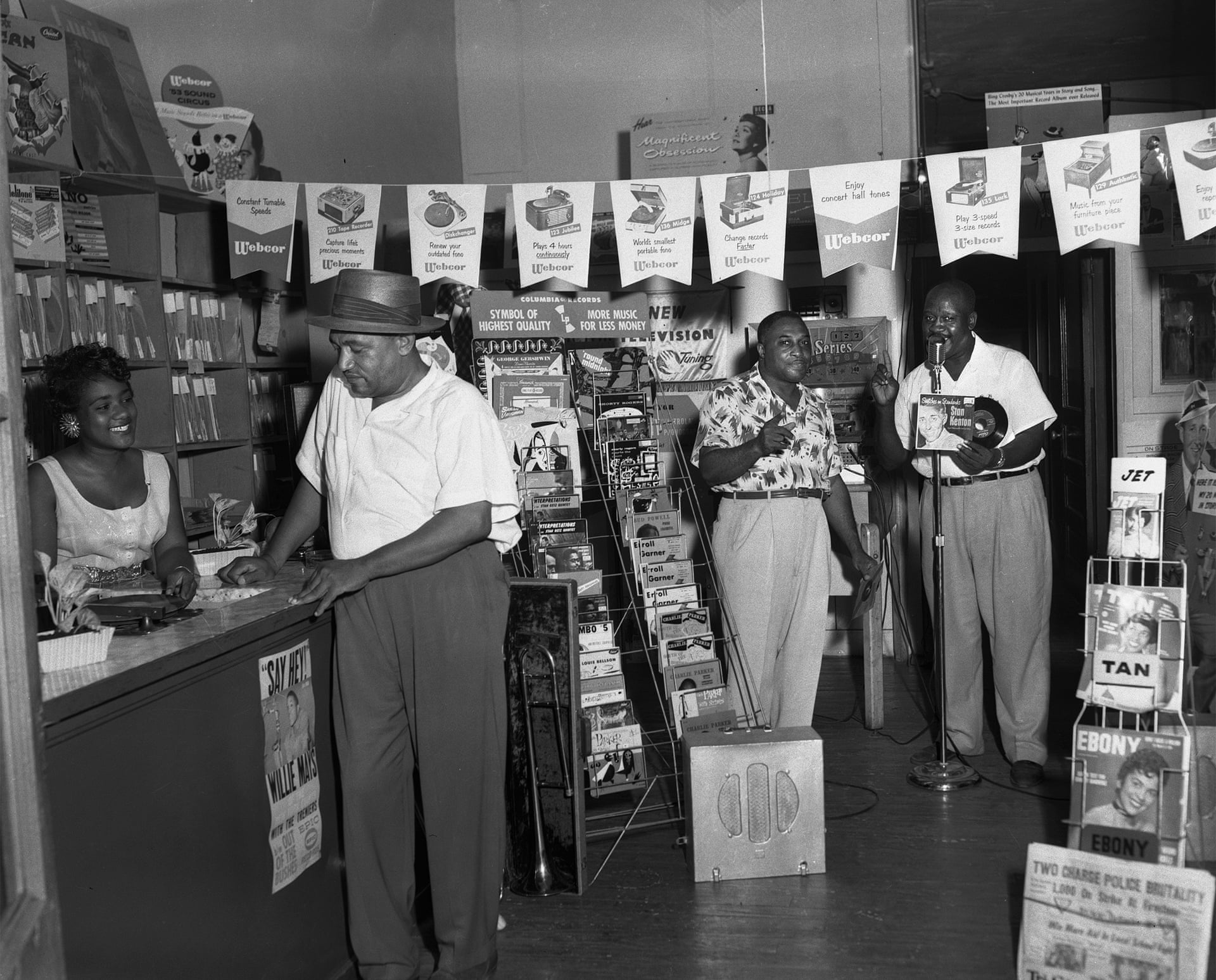
A Memphis record store in the summer, 1954
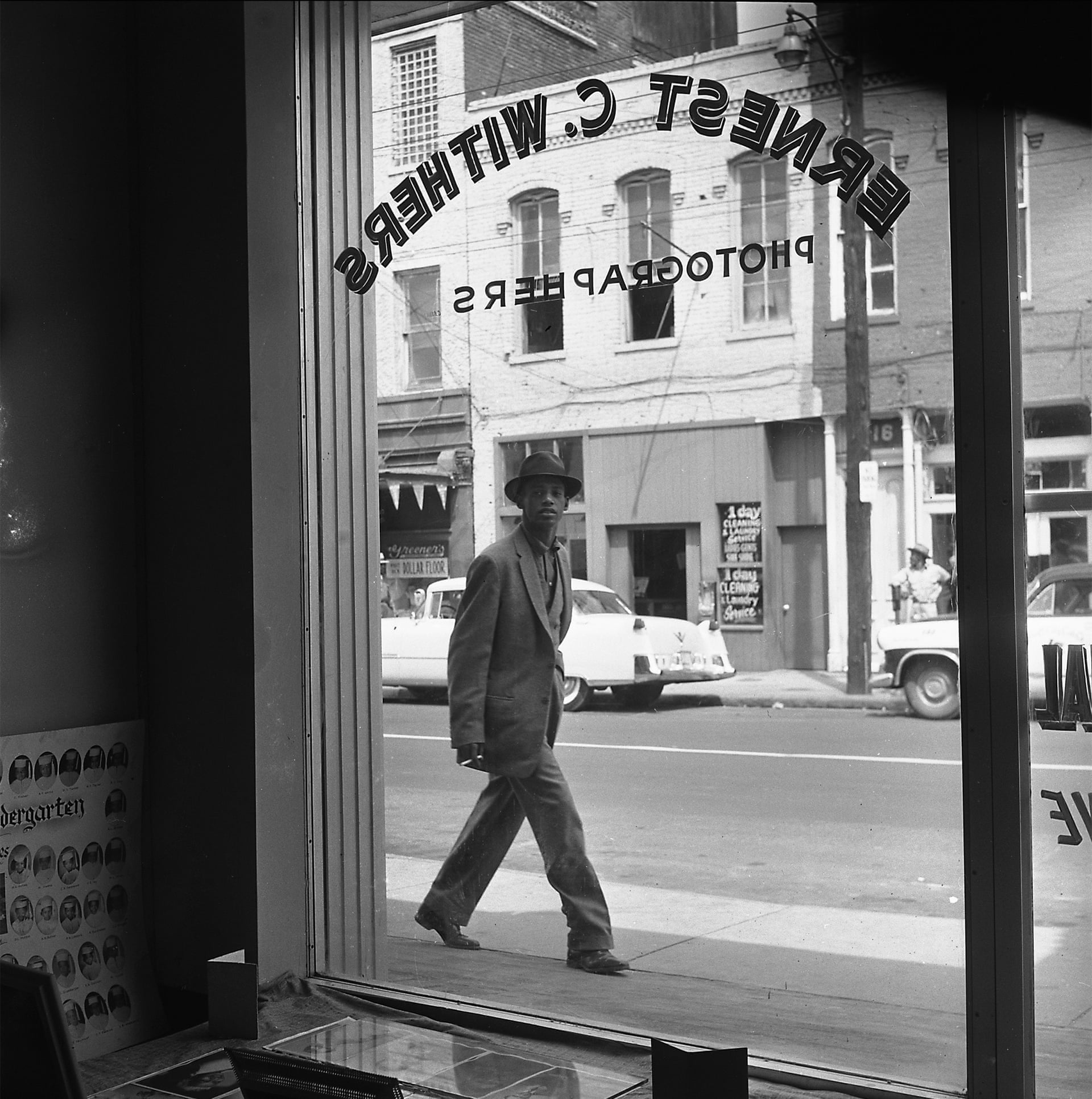
Ernest Withers’ Beale Street studio, no date

The WDIA Twins, c 1948
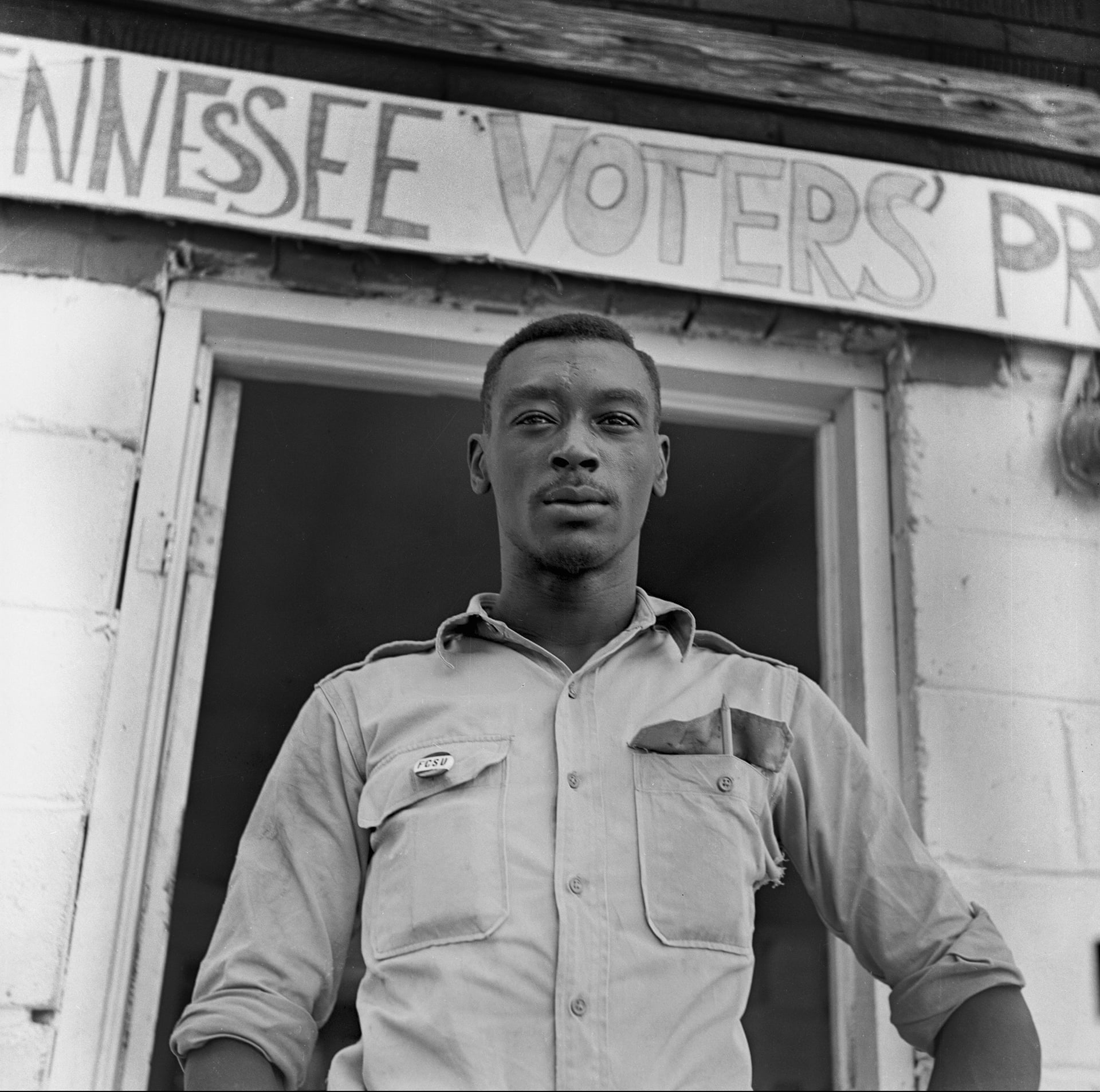
Student volunteer working to register voters, 1964-65
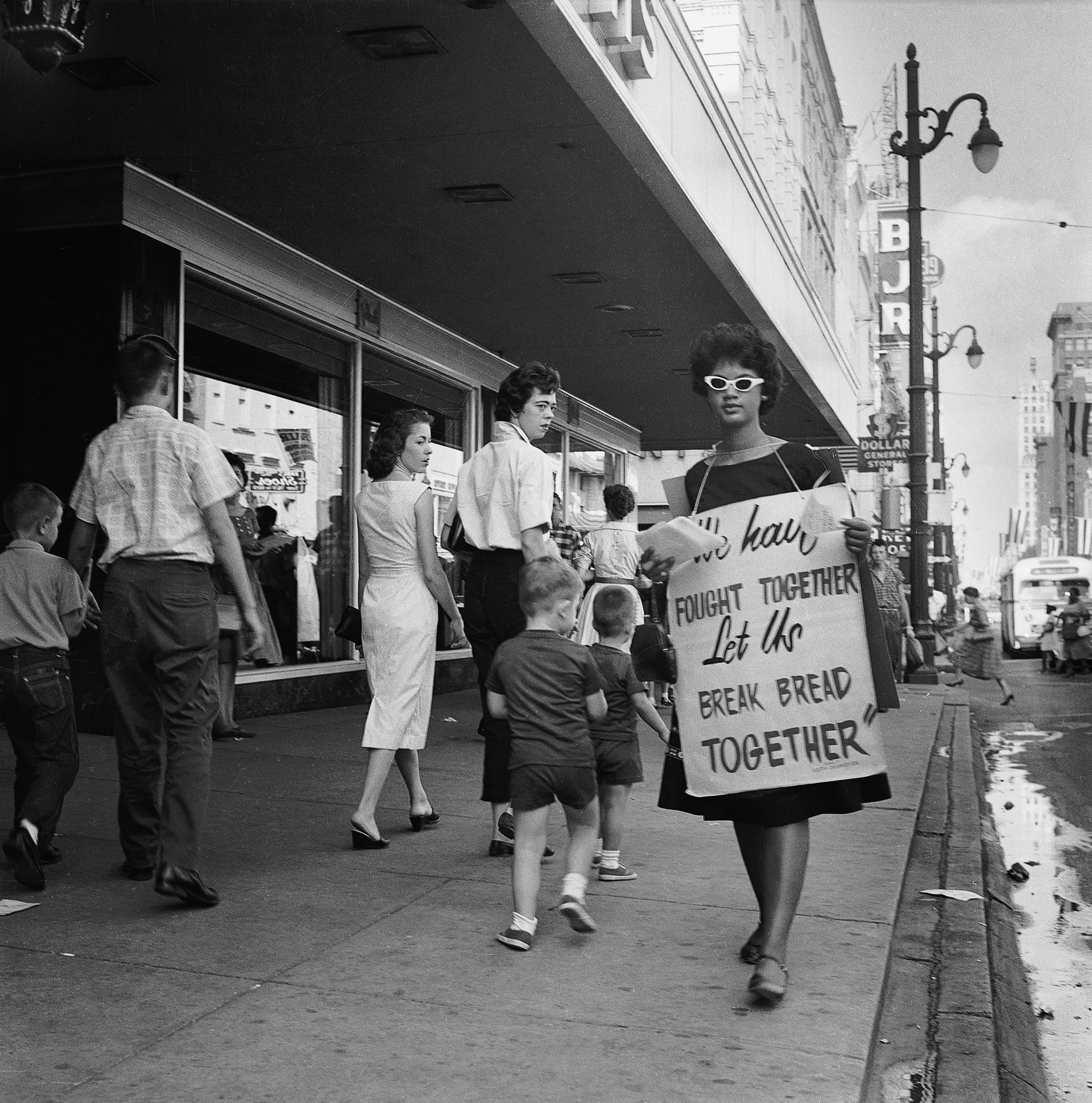
Junienne Briscoe, 16 years old, joined the picket lines along Main Street, no date. The Melrose high school student recalled: “I did this so that my children wouldn’t have to go through the humiliation that I did. Separate drinking water, separate bathrooms. It was painful’
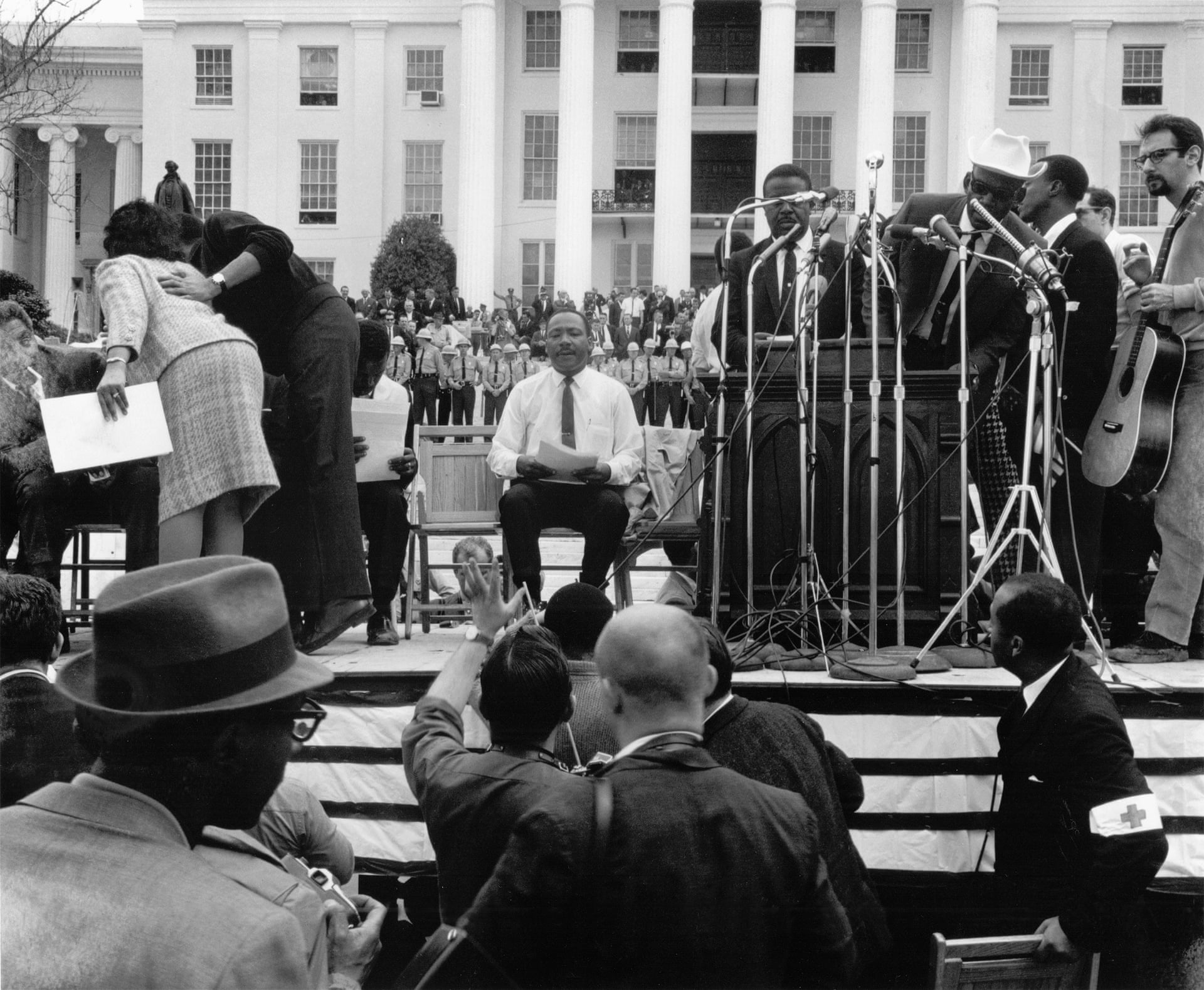
Martin Luther King Jr waiting to be introduced at the Alabama Capitol after leading the 54-mile march from Selma to Montgomery, 1965
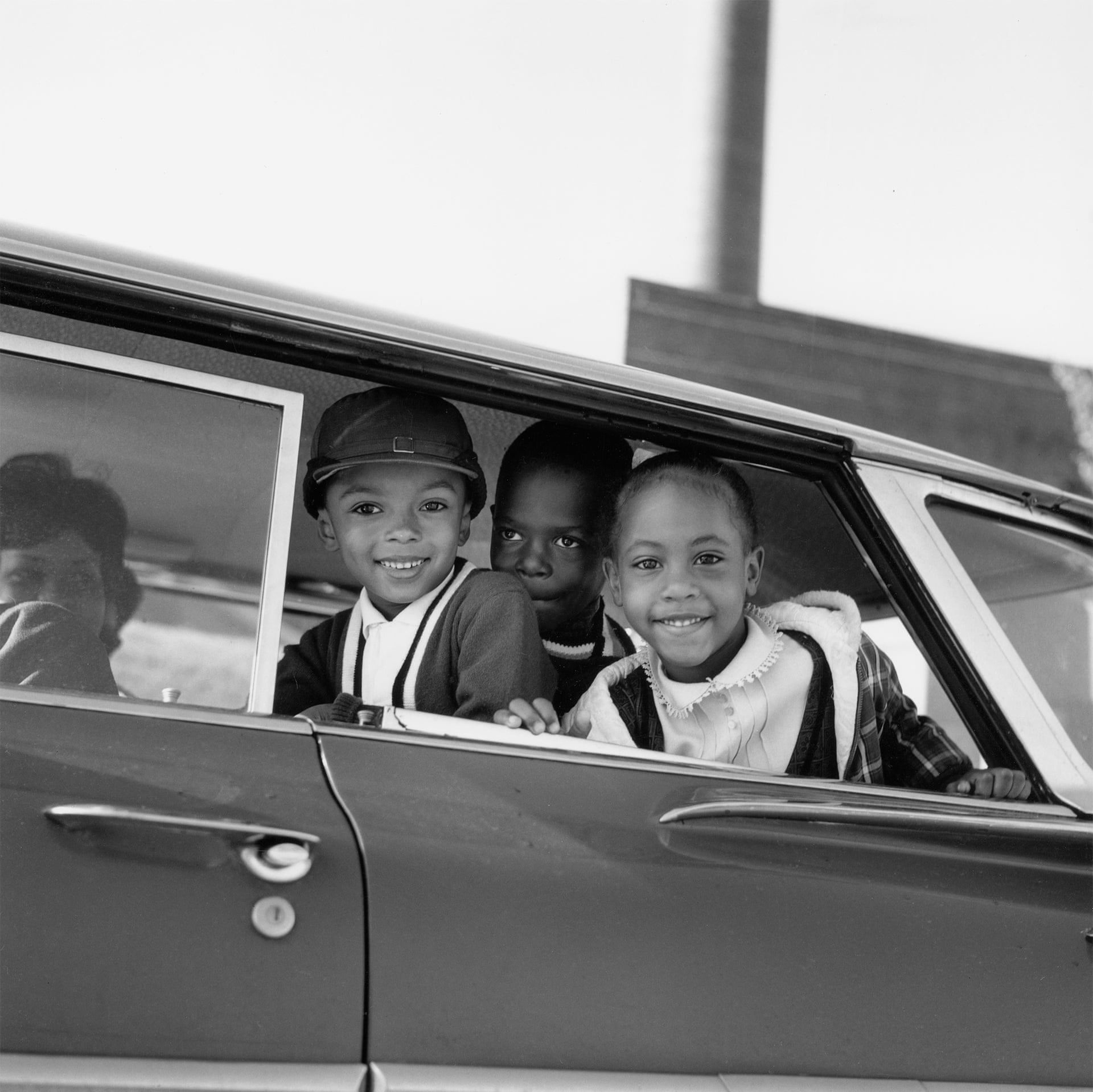
Michael Willis, Harry Williams and Dwania Kyles sit in the back of a car during the first day of Memphis school integration, 1961
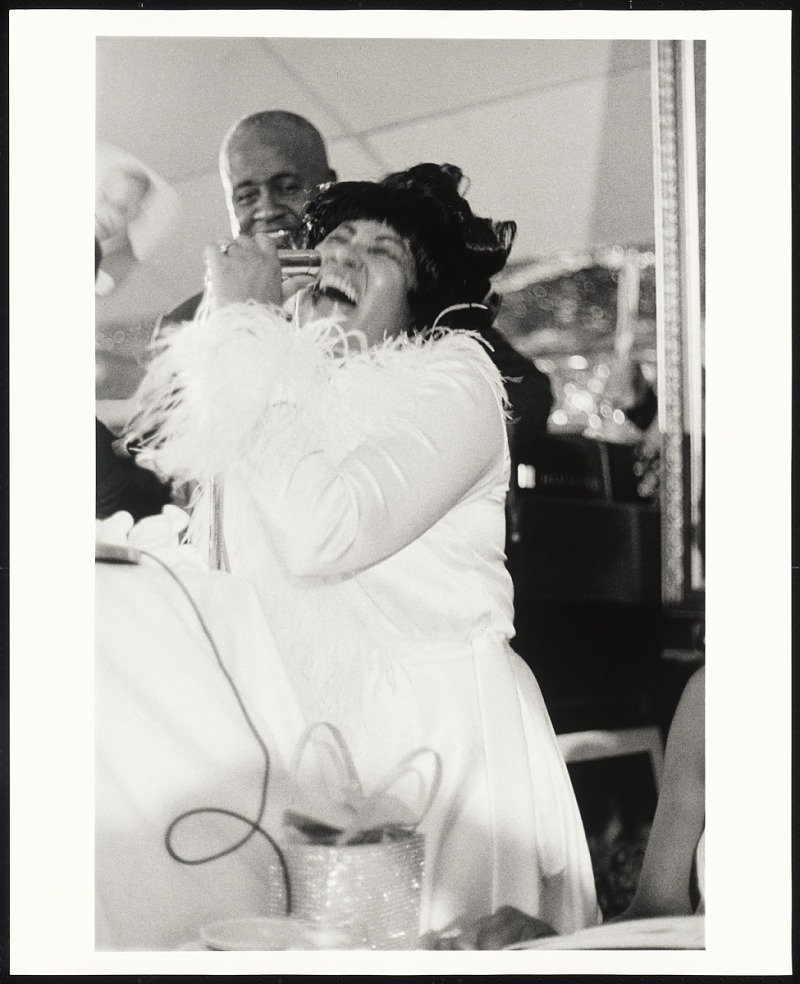
Made by Ernest C. Withers. Photograph of Aretha Franklin in a white jacket with feathery cuffs, sings into a microphone – Smithsonian

An assembly at Booker T Washington high school, no date
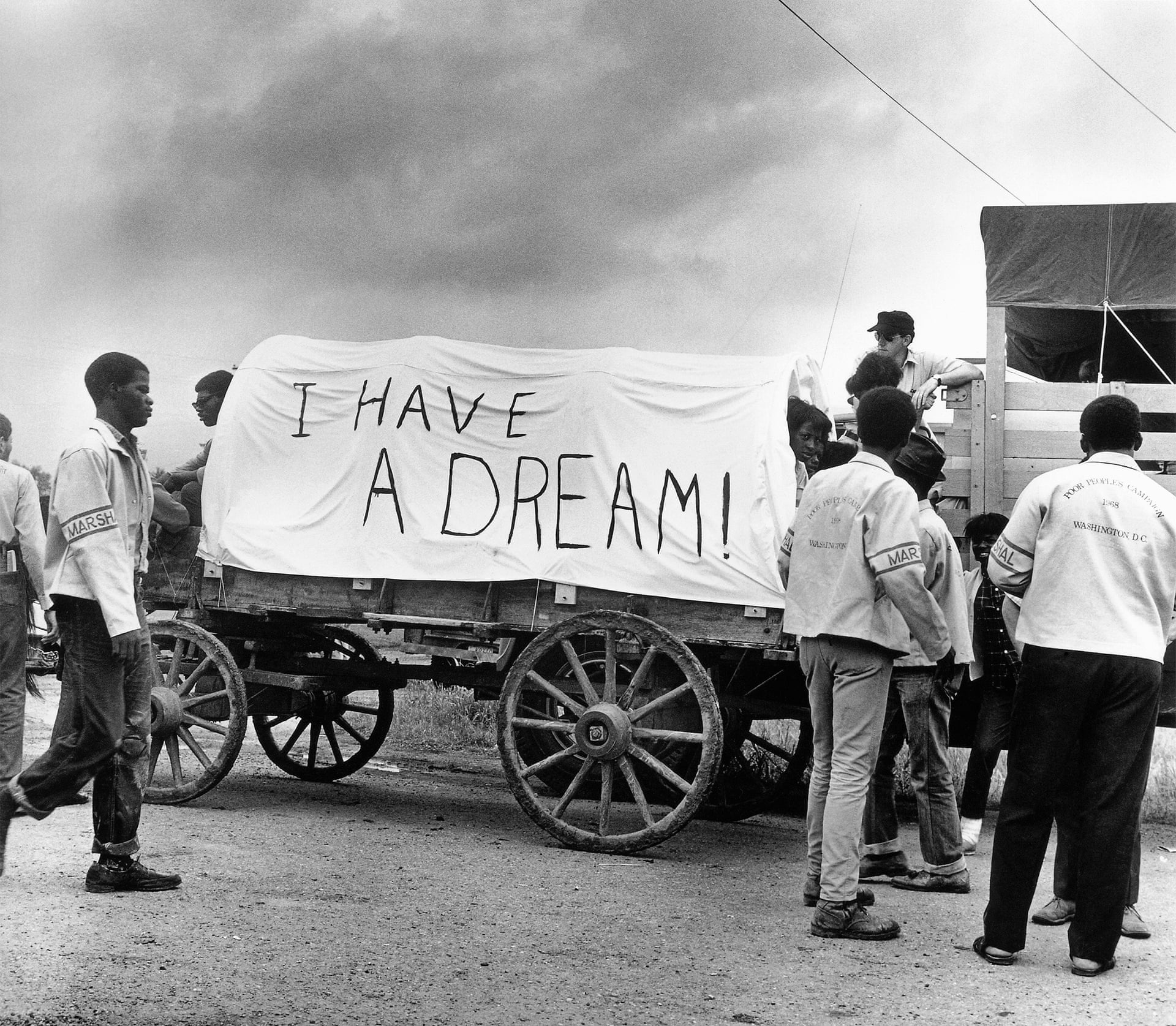
A mule train, part of Martin Luther King Jr’s Poor People’s Campaign, leaves Marks, Mississippi for Washington DC, 1968

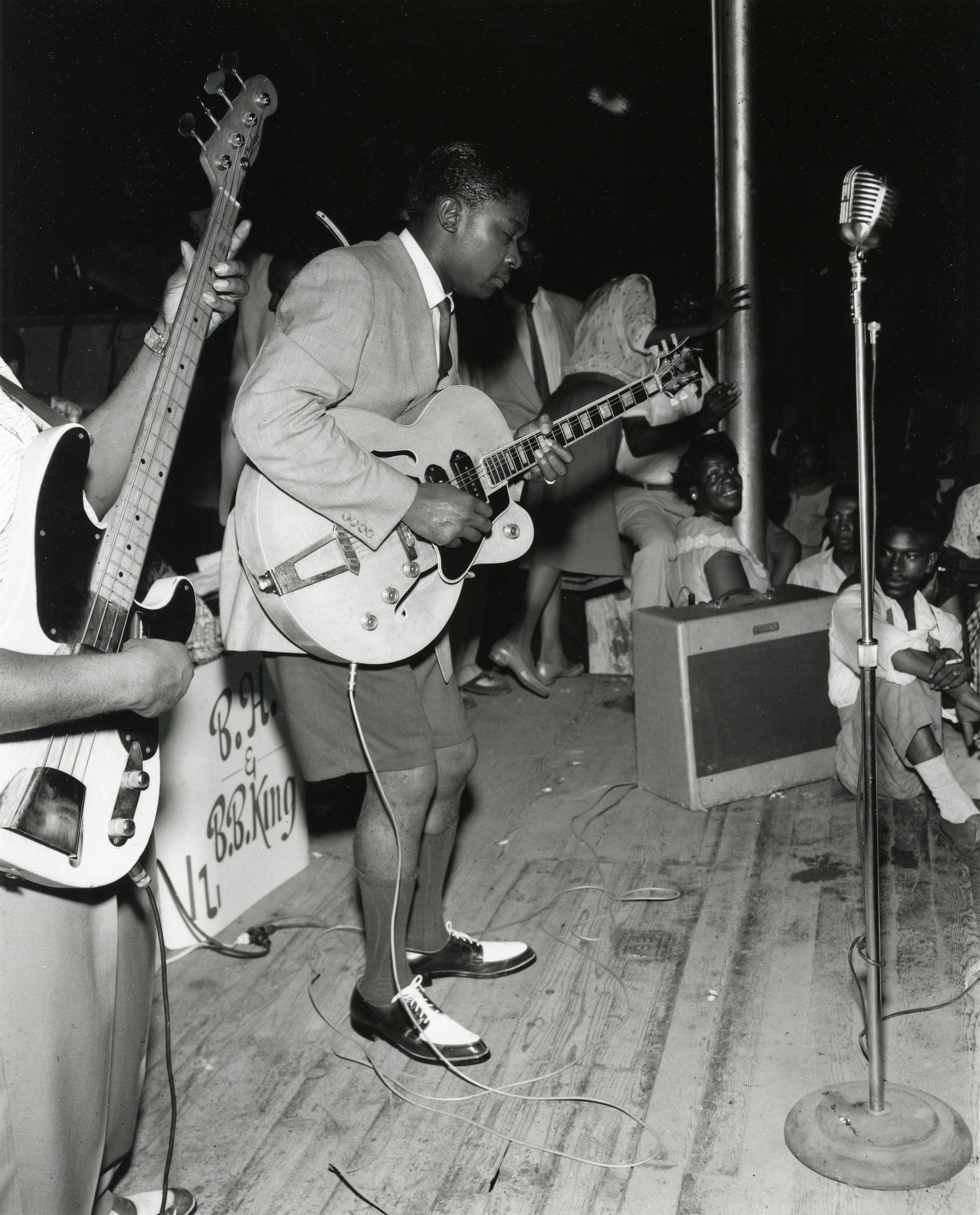
BB King on stage at the Hippodrome, Beale Street in Memphis, TN, with Bill Harvey, c 1950\
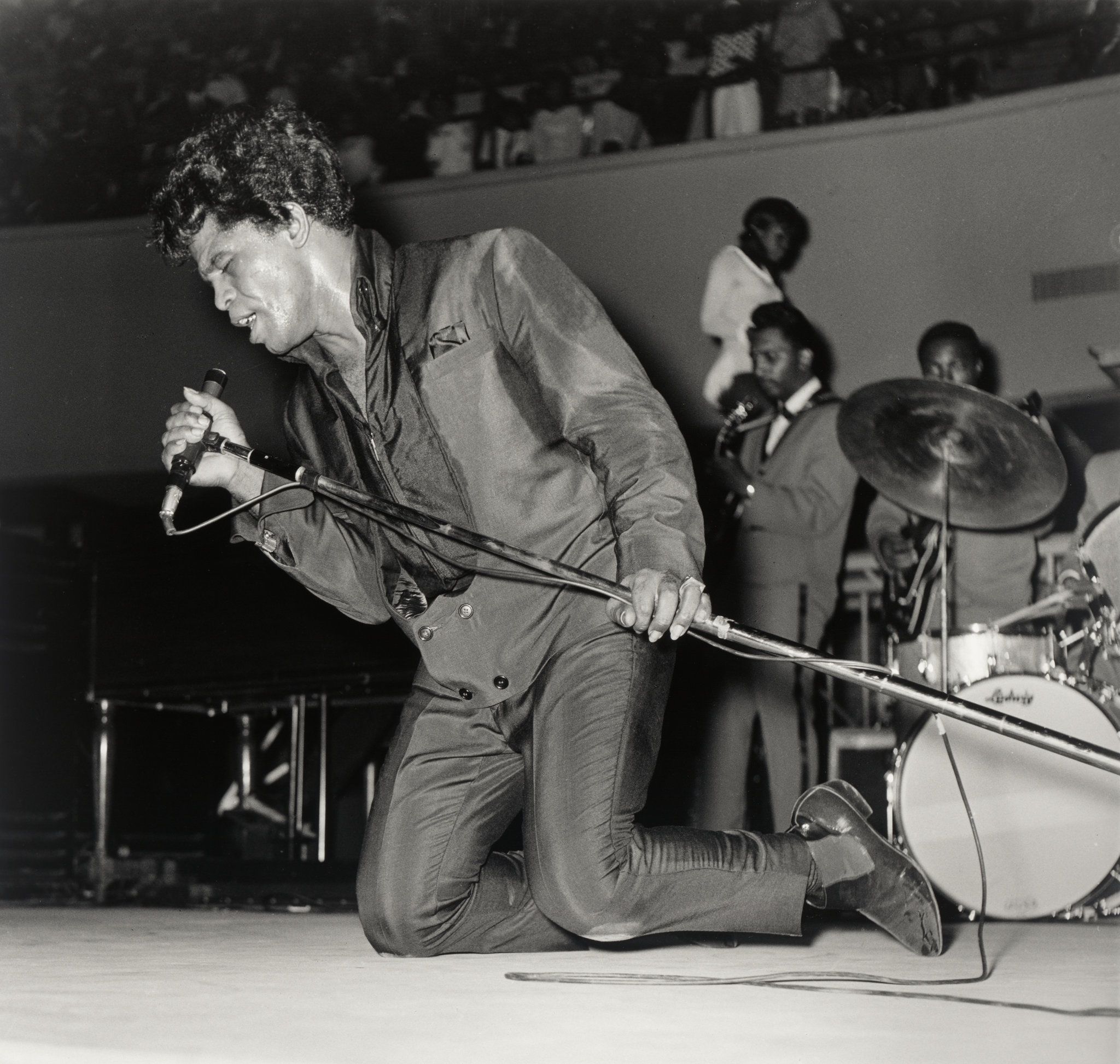
James Brown, Mid-South Coliseum, Memphis, TN
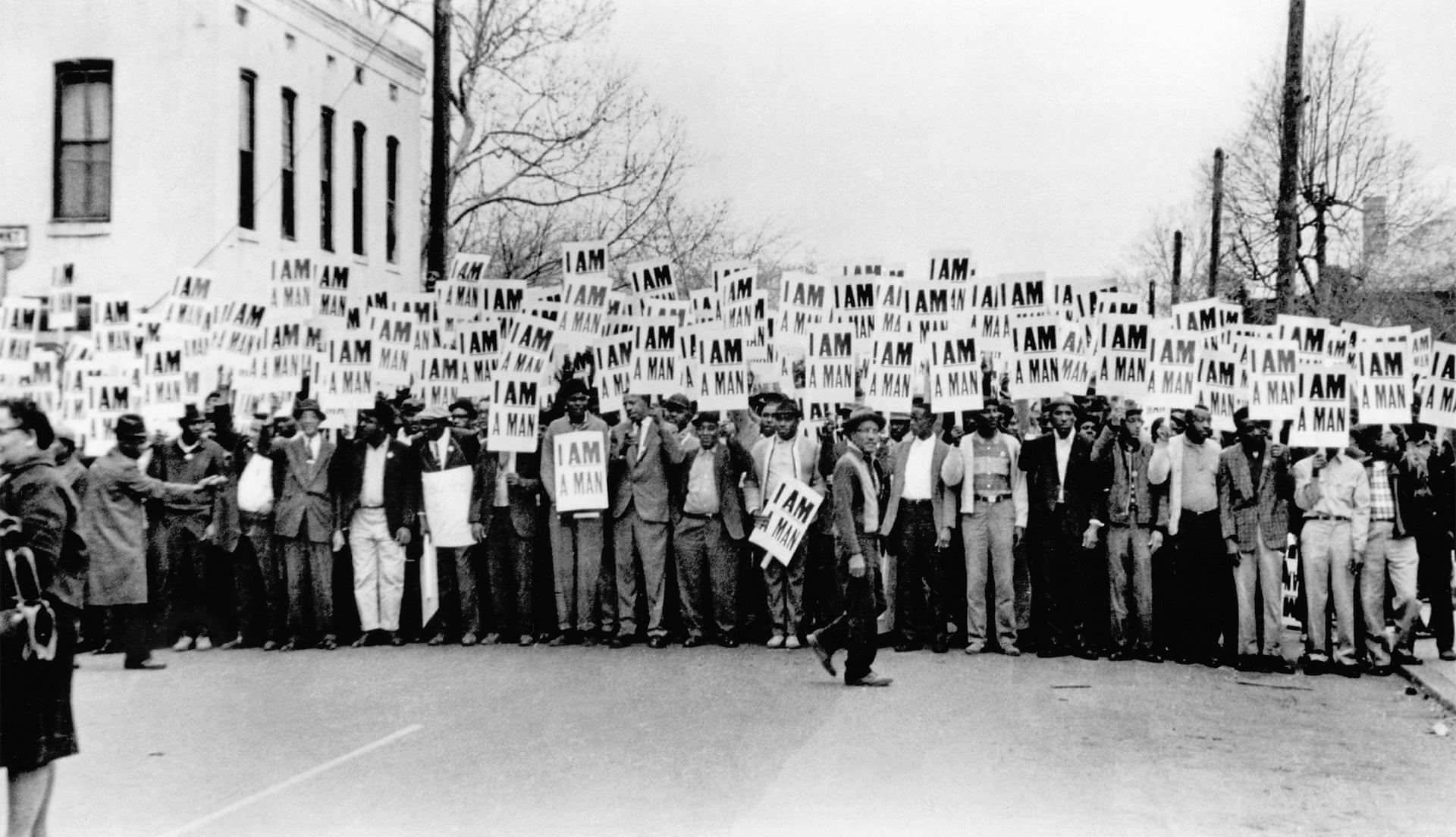
I Am a Man sanitation workers strike, Memphis, TN, 1968

Double exposure of a nighttime march, no date
All photographs: The Ernest C Withers Family Trust; courtesy of Fahey/Klein Gallery, Los Angeles
Would you like to support Flashbak?
Please consider making a donation to our site. We don't want to rely on ads to bring you the best of visual culture. You can also support us by signing up to our Mailing List. And you can also follow us on Facebook, Instagram and Twitter. For great art and culture delivered to your door, visit our shop.


